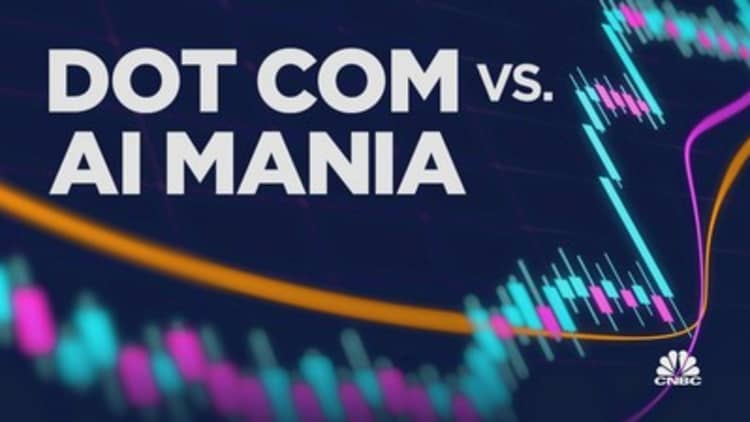Microsoft shares climbed to a record Thursday after analysts at JPMorgan Chase touted the software maker's growth prospects in artificial intelligence.
The stock rose 3.2% to close at $348.10, topping its prior all-time high reached in November 2021, the same month the Nasdaq peaked. U.S. indexes enjoyed a broad rally, following the Federal Reserve's announcement Wednesday that it would hold off on increasing interest rates.
AI has been a hot topic all year, after Microsoft-backed OpenAI in November released the ChatGPT chatbot, which quickly went viral. Tech companies have rushed to embed the technology into products and features and have boasted their ability to use AI to drive cost savings as recession concerns persist.
Microsoft is a major beneficiary of the rise of ChatGPT and tangential products. On top of its hefty investment in OpenAI, the company provides the underlying computing power. Microsoft also has an exclusive license on OpenAI's models, including the GPT-4 large language model that can spit out natural-sounding words in response to a human's text input.
Microsoft has incorporated OpenAI tools into its Bing search engine and even the Windows operating system. At the company's event in February to announce its Bing Chatbot, Microsoft CEO Satya Nadella said "it's an exciting time in tech."
Investors want to see what it all means for Microsoft's earnings and revenue.
In April, Microsoft finance chief Amy Hood said she expects fiscal fourth-quarter growth for Azure cloud of 26% to 27% year over year in constant currency, with 1 percentage point of it coming from AI services. On Monday, in a public discussion with Microsoft technology chief Kevin Scott, Hood provided more specifics, saying that "the next generation AI business will be the fastest-growing $10 billion business in our history."
In the past four quarters, Microsoft has generated almost $208 billion in total revenue.
Scott went deeper on Hood's prediction.
"Because it really is a very general platform, we have lots of different ways that $10 billion of ARR is going to first show up," he said. ARR stands for annual recurring revenue.
"There is all of the people who want to come use our infrastructure, whether they're training their own models, whether they are running an open-source model they've got or whether they are making API calls into one of the big frontier models that we've built with OpenAI," Scott said.
Following the event, JPMorgan analysts lifted their price target to $350 from $315.
"While MSFT continues to encounter a broad wave of cloud optimizations weighing on Azure growth, we see it planting the longer-term seeds for success across Security, Teams, Power Apps and now the forward-looking OpenAI/ChatGPT investments," wrote the analysts, who have the equivalent of a buy rating on Microsoft stock.
With Microsoft's 46% rally this year, the stock has recouped all its losses from 2022, when investors rotated out of technology in anticipation of rising interest rates and economic headwinds.
Negative sentiment around cloud growth and a contracting PC market led to pessimism on Wall Street last year. But the excitement around AI in addition to the cost-cutting measures that tech companies implemented produced a renewed bullishness. The Nasdaq is up 32% this year, doubling the gains in the S&P 500.



